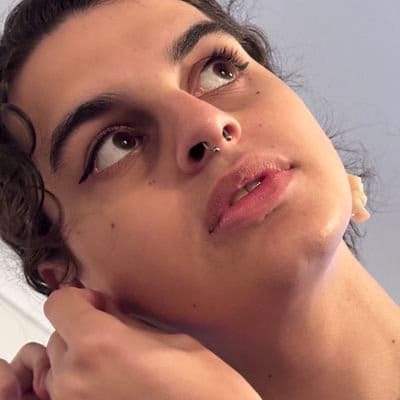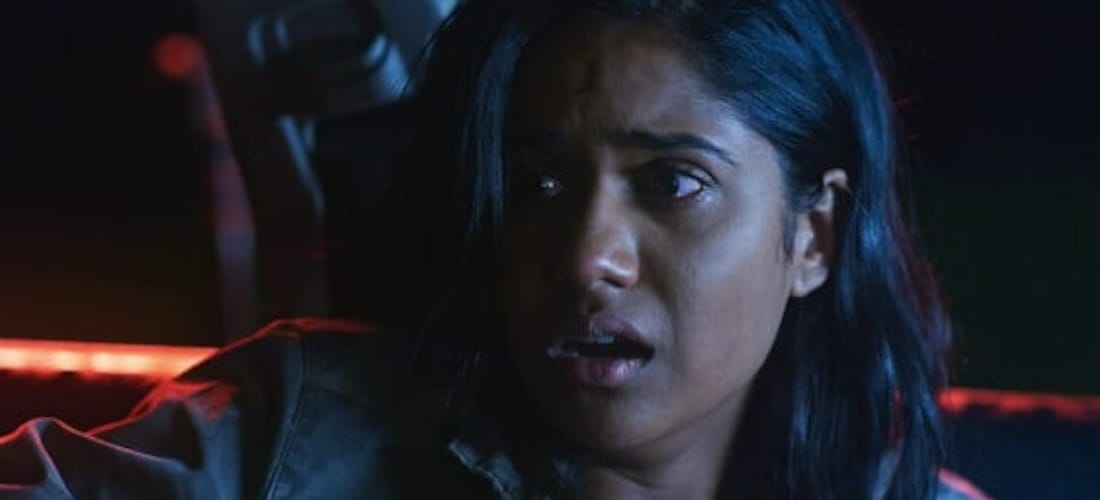In the lead-up to my screening of wunderkind director Alice Maio Mackay’s newest effort Carnage for Christmas (2024), I had been working on an essay about Bob Clark’s Black Christmas (1974). My research had been broad, covering slasher film history, feminist readings of slasher films and the impact of Black Christmas on the genre.
Black Christmas represents to me not just the beginning of the slasher as we know it today, not just the apex of holiday horror, but a towering work of feminist horror filmmaking which holds up to this day. The strong feminist subtext is what sets Black Christmas apart from other slashers for me. Where critics like Carol J. Clover rightly suggest that the slasher is a genre built around the brutalisation of women, Black Christmas configures this brutalisation in such a way as to render its bloodshed as a condemnation of male violence rather than a reinscription of taboos against female sexuality.
Terrifier 3 (2024) – this year’s most prominent Christmas slasher release – is a parade of mutilated women’s bodies which, while it certainly has some appeal, left me aching for something with a little more meat on its bones. I was hoping that a holiday horror effort directed by Alice Maio Mackay and edited by Vera Drew – two of the main faces of the as-yet-undeclared “Transgender New Wave” – would scratch that itch. Unfortunately, I am still itching.
Despite her Fassbinder-esque work rate, Mackay’s talents as a writer don’t seem to have progressed much in her short and busy career. Carnage is full of overblown dialogue laced with cringeworthy and already dated language – SPOILER#a reference to “Karens” being the most egregious example.#SPOILER
While I found Mackay’s Garth Marenghi approach to subtext charming in T Blockers (2023) – subtext is, after all, for cowards – in Carnage, her observations are so trite and hamfisted that I only ever felt irked when the film paused to make a point. Mackay seems to want to make big points about the conservative nature of small towns and the way this breeds male violence but she seems to struggle with synthesising theme and form. Every political statement is made via either protagonist monologue or cardboard cutout stand-in character. The result is a film which feels stunningly liberal; SPOILER#every “bad” character comes off as one lazy cop, one violent man,#SPOILER and Mackay seems uninterested in interrogating the structures and cultures which produce these characters. The violence in slasher films can be so generative but Mackay simply fails to lean on the tools of the genre she’s working in to make her point and the end result is clunky and overwrought.
SPOILER#With a transfem protagonist, so much fun could’ve been had playing with the conventions of the slasher re: the phallic Final Girl and the feminised male killer but Mackay opts instead for cheap, liberal slop. The eventual reveal of the killer as a spurned chaser is ineffectual and lame, so too is his eventual defeat at the hands of every surviving queer in the film – i.e almost all of them.#SPOILER
SPOILER#Mackay seems to end all of her films in the same way and while it seemed triumphant at first, the effect is beginning to wear off.#SPOILER
SPOILER#The kills themselves are particularly baffling. Not only are there shockingly few – no more than four! – all of them happen off-screen as Vera Drew cuts away right before the killing blow is struck, every single time.#SPOILER It’s extremely frustrating, especially since Drew’s editing throughout the rest of the film is one of my favourite parts. Her creative use of transitions reminded me of some of the more stylistic moments in the Saw series and left me with a grin every time. It matches up well with Mackay’s maximalist direction to create a visual language which is extremely charming. SPOILER#It’s a shame the kills aren’t indulged in, as the practical gore in other parts of the film is highly entertaining. Mackay really delights in the guts and mutilated corpses of the victims, a standout being the “blood eagle” scene which felt reminiscent of Se7en (1995) or Hannibal (2013-15).#SPOILER
Mackay has always worn her influences on her sleeve but here she really seems incapable of escaping them. There is a tension in Carnage between Mackay’s clear desire to create a new language of transgender cinema versus her tendency towards homage and pastiche. Here, the pastiche wins.
As a Gregg Araki disciple myself, I find Mackay’s adoration of the New Queer Cinema master charming, but his influence on this film is so overbearing that it took me out of it at many points. Mackay saturates her film in as many colours as possible, seemingly missing how the colours in Araki films are always so focused and matched up to a particular film/scene. SPOILER#It does not help when Mackay throws in direct references such as her characters frequenting a nightclub called “Nowhere Club” or when her protagonist answers the phone with “Lola’s Corpse Collection Service: You pack ‘em, we stack ‘em”; a clear reference to a moment in Nowhere (1997) when James Duval’s character Dark addresses a caller with the line “City Morgue: You stab ‘em, we slab ‘em”. The line from Nowhere is snappy and original but its invocation here is a clunky retread.#SPOILER
This is largely my issue with Mackay’s approach to incorporating her cinematic interests into the film. She takes from films which are genuinely transgressive and ground-breaking and reconstitutes them into something which adopts their aesthetics but none of their radicalism. I think it’s apt that Mackay has such an affinity for the dying Dimes Square scene – Betsey Brown makes a brief appearance in Carnage – as that scene is similarly fascinated with the aesthetics of transgression but is full of artists too self-centred to make art that’s really about anything. I wouldn’t say that about Mackay who clearly does care deeply, but she has a much stronger grasp on aesthetics than politics and doesn’t do much in the way of engaging how her aesthetics reflect/create a particular politics.
Maybe I’m less enamoured with trans art for the sake of trans art than I was when I saw T Blockers, but this feels like a step down for Mackay. I didn’t see Satranic Panic (2023), but it felt like there was something radical in T Blockers which doesn’t exist here in Carnage. I find myself wanting more. I was deeply charmed by many aspects of Carnage, but I feel we deserve better than to relegate ourselves to cheap pastiche.
It feels as if we are on the precipice of something really big with regards to trans cinema. More trans filmmakers are creating films than ever before. Earlier, I alluded to a potential “Transgender New Wave” and while it feels presumptuous for me to declare that, there is something in the air that feels like a movement. Reading back on B. Ruby Rich’s 1992 article “New Queer Cinema”, the films which defined that movement still feel today like wholly new and radical formal experiments in filmmaking. They were not without their influences – the long shadow of the French New Wave certainly encroached – but they created a new cinematic language of queerness unique to a generation of queers which had been ravaged by AIDS and Reagan-era homophobia.
Will we, as trans filmmakers, do the same for our current political moment?
I certainly hope so.

